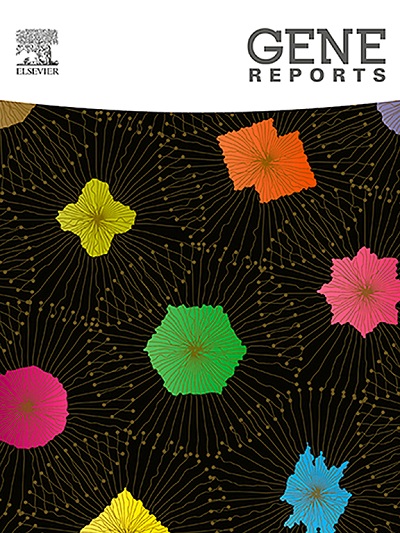Exploring of prognostic biomarkers in elderly gastric cancer by neoadjuvant therapy: Insights from differential gene screening, mutation analysis, and immune profiling
IF 1
Q4 GENETICS & HEREDITY
引用次数: 0
Abstract
Elderly gastric cancer is a high-risk population among all gastric cancer patients. However, there is still limited research on this group of gastric cancer patients, and further exploration is needed. In this study, differential gene screening and enrichment analysis, gene mutation analysis, clinical characteristic study, tumor-related signaling pathway calculation, tumor stemness analysis, immune correlation calculation, clinical prognosis model construction, drug sensitivity prediction, and in vitro cell validation experiments were conducted. Potential first four genes CST1, CLDN3, TOP2A, and MYBL2 were identified through differential gene screening and enrichment analysis. Subsequently, the results showed that the main mutation types of these four genes were missense mutations and splice-site mutations. Furthermore, gastric cancer patients with high expression of these four genes had lower overall survival time compared to those with low expression, and they were mainly concentrated in stage T3N1M0, with a higher probability of postoperative metastasis than recurrence. Additionally, all four genes showed a positive correlation with key regulatory genes in the DNA damage signaling pathway, and there were statistical differences. On the other hand, CLDN3, TOP2A, and MYBL2 were positively correlated with tumor stemness index, while CST was negatively correlated. At the immune level, T cells and Macrophage cells were found in samples with high expression of the four genes, while other immune cells appeared to varying degrees in the four gene high expression group. Finally, in the clinical prediction model, only CLDN3 showed good prognostic ability. In terms of chemotherapeutic drug sensitivity prediction and in vitro cell validation experiments, patients with high expression of CST1, TOP2A, and MYBL2 may develop drug resistance after re-chemotherapy, while patients with high expression of CLDN3 can continue to benefit from the original chemotherapy regimen. This study provides new predictive biomarkers and possible molecular mechanisms for elderly gastric cancer patients receiving neoadjuvant therapy.
求助全文
约1分钟内获得全文
求助全文
来源期刊

Gene Reports
Biochemistry, Genetics and Molecular Biology-Genetics
CiteScore
3.30
自引率
7.70%
发文量
246
审稿时长
49 days
期刊介绍:
Gene Reports publishes papers that focus on the regulation, expression, function and evolution of genes in all biological contexts, including all prokaryotic and eukaryotic organisms, as well as viruses. Gene Reports strives to be a very diverse journal and topics in all fields will be considered for publication. Although not limited to the following, some general topics include: DNA Organization, Replication & Evolution -Focus on genomic DNA (chromosomal organization, comparative genomics, DNA replication, DNA repair, mobile DNA, mitochondrial DNA, chloroplast DNA). Expression & Function - Focus on functional RNAs (microRNAs, tRNAs, rRNAs, mRNA splicing, alternative polyadenylation) Regulation - Focus on processes that mediate gene-read out (epigenetics, chromatin, histone code, transcription, translation, protein degradation). Cell Signaling - Focus on mechanisms that control information flow into the nucleus to control gene expression (kinase and phosphatase pathways controlled by extra-cellular ligands, Wnt, Notch, TGFbeta/BMPs, FGFs, IGFs etc.) Profiling of gene expression and genetic variation - Focus on high throughput approaches (e.g., DeepSeq, ChIP-Seq, Affymetrix microarrays, proteomics) that define gene regulatory circuitry, molecular pathways and protein/protein networks. Genetics - Focus on development in model organisms (e.g., mouse, frog, fruit fly, worm), human genetic variation, population genetics, as well as agricultural and veterinary genetics. Molecular Pathology & Regenerative Medicine - Focus on the deregulation of molecular processes in human diseases and mechanisms supporting regeneration of tissues through pluripotent or multipotent stem cells.
 求助内容:
求助内容: 应助结果提醒方式:
应助结果提醒方式:


